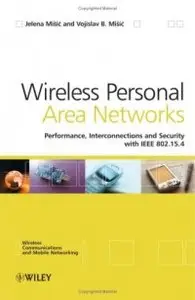Wireless Personal Area Networks: Performance, Interconnection, and Security with IEEE 802.15.4
John Wiley & Sons | 2008 | ISBN: 0470518472 | 318 pages | PDF | 2,02 MB
Wireless personal area networks and wireless sensor networks are rapidly gaining popularity, and the IEEE 802.15 Wireless Personal Area Working Group has defined no less than three different standards so as to cater to the requirements of different applications. One of them is the low data rate WPAN known as 802.15.4, which covers a broad range of applications that demand low power, low complexity scenarios typically encountered in home automation, sensor networks, logistics, and other similar applications. The initial standard, adopted in 2003, has enjoyed wide industry support and was even adopted by the ZigBee Alliance as the foundation for the ZigBee specification. In time, and partly because of the requirements of the ZigBee specification, a revised 802.15.4 standard was adopted in September 2006.
While industry support has been quite warm, researchers were slower to follow, and in-depth analyses of the operation and performance of 802.15.4-compliant networks were rather scarce. Reports on the operation of single-cluster 802.15.4 networks became more common only in 2006, while those pertaining to the operation of multi-cluster networks are still counted in single-digit numbers as of the time of this writing; security of 802.15.4 WPANs has also received little attention so far. The aim of this book is to fill this gap by providing sufficient insight into some of the most important aspects of wireless personal area networks with 802.15.4 – their performance, interconnections, and security – which has been our main research focus since 2004, in a single, coherent and informative volume. The book focuses on the MAC layer, where many variables exist that critically affect performance; it does not describe all the details of 802.15.4 technology (the official standard should be used to that effect), various application scenarios of 802.15.4 networks (other books deal with those topics), or the issues related to 802.15.4 communications at the physical layer (which are extensively covered by the research community). Furthermore, it relies on analytical techniques, rather than simulation, whenever possible, since we believe that rigorous mathematical techniques, in particular the tools of queueing theory, provide the best foundation for performance evaluation tasks.



